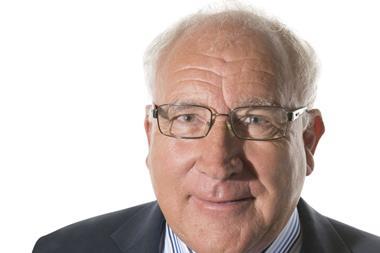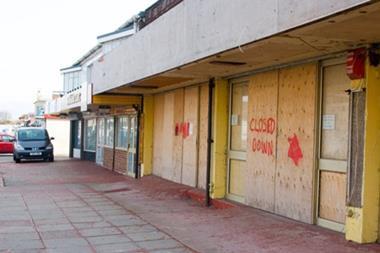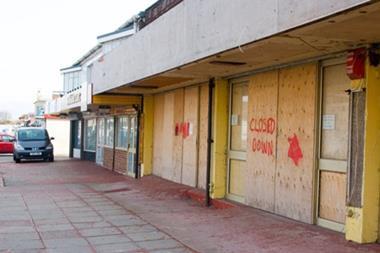Only trying to help
May 2014: Costa boss Jason Cotta oversees initiatives to drive 24-hour economy, with retailers including Boots and The Co-op helping him with report on success of schemes across Portas Pilot towns
March 2015: Southampton University claims digital is driving high street revival thanks to trends such as click & collect
March 2015: Digital High Streets Report 2020 claims small shops could make billions more with new ways of online trading. Plans included a centralised High Street Digital Lab
Four years after being parachuted in by David Cameron as the saviour of the British high street, Mary Portas was this week among those missing from the government’s new taskforce, set up to accelerate her rescue plans.
The self-styled Queen of Shops wasn’t the only big name missing in the new-look Future High Streets Forum announced by high streets minister Marcus Jones this week.
Portas’s nemesis, Tesco, as well as the likes of Costa Coffee and McDonald’s are among a raft of businesses and organisations no longer on the forum. Instead Nuneaton MP Jones, the latest DCLG minister with responsibility for breathing new life into town centres, announced a streamlined executive and change in focus.
If he gets his way it could lead to a dramatic reduction in town centre space used for traditional retail.
But can he win support from retailers and, in a week in which so many hopes were pinned on action by the Chancellor to tackle what Tesco boss Dave Lewis calls the “lethal cocktail” of business rates and employment costs, are the latest moves anything but window dressing?
Jones revealed a slimmed down group of businesses and trade organisations. His co-chair is Boots supremo Simon Roberts, with other members including John Walden, chief executive of Home Retail Group, and Robin Foale, MD of Santander. With nine on the board it is barely a third the size of the old forum, formed in March 2013, that last met before the election under his predecessor Penny Mordaunt, since re-stationed to another battleground as minister for the armed forces.
The biggest change in strategy is around Jones’s determination to get consensus among retail and property leaders on the need for a fundamental restructure of the high street, which, he says has been “changed beyond recognition” by the internet. “We need a high street fit for the 21st century. There is too much retail in the wrong place and we need more leisure, more services, a stronger early evening economy and, crucially, more residential space.”
Jones also wants far more involvement from retail big guns in his high street re-design, claiming supermarket store managers should be playing a more active role. “Over many years we have tended to have town centre partnerships made up of independent retailers,” he says. “I want to get the major retailers much more involved in a consistent way. Quite often store managers of the larger stores are not engaged.”
Also on the agenda for the forum, which met for the first time in its new guise on Monday, are plans to build on Argos boss Walden’s Digital High Streets report in the spring, which suggested small retailers could make billions in extra revenue by getting better at using digital technologies.
Jones says the forum will act as a hub for information and tools to help businesses set up services like click & collect, which, he says, “isn’t the enemy of the high street people thought”.
Prize money
Next week the forum will reveal who out of Cambridge, Chipping Norton, Bognor Regis, and others among the 21 finalists of its Great British High Street Competition 2015 will scoop a share of an £80,000 prize, alongside tips from Google’s training taskforce for 100 of their shops, bars and restaurants. Jones claims the 200,000-plus votes from the public in the competition show town centres remain a source of local pride. But, with the forum operating on a shoestring, can he achieve vital buy in from major retailers, some of whom were contemptuous of the Portas Pilots?
Portas’s 2011 report called for retailers such as the big supermarkets to “support and mentor local businesses and independent retailers” and report annually on their help for the high street. However, a source on the forum previously told The Grocer subsequent support was “half hearted at best” and plans first discussed by members two years ago to drive up more involvement between retailers and local councils got nowhere fast.
“The fact is large businesses are not set up like that,” admits one member.”The minister talks about getting more store managers involved in their local town rescue but how do you involve someone for whom being part of the community is not part of their core job?”
Even where retailers have come together to try to revive deprived high streets, they have found the going tough. Earlier this month the Healthy High Streets programme, a separate initiative run by Business in the Community and backed by the likes of Boots, M&S and Greggs, reported that 33 towns among those in its rescue effort were well behind hoped for improvements in footfall. Despite outperforming the rest of the UK, the towns saw a 0.4% improvement in the first year, against a target of a 10% increase in footfall over three years, which looks increasingly optimistic.
However, Helen Dickinson, director general of the BRC, who sits on the new forum, claims getting involvement from retailers at local level, as well as communicating success stories more effectively at national level, is vital. “If you haven’t got that, you haven’t got a chance,” she says.
Yet all the cooperation in the world by retailers big and small risks counting for nothing unless the forum and its initiatives have enough clout within government to force really big policy initiatives, with rates reform top of the pile. “Ultimately achieving the revitalisation towns and cities need may come down to the need for regulation across several different government departments, but at least now these issues are being talked about in government,” says Ed Cooke, director of policy at the British Council of Shopping Centres. “I think it’s hugely welcome that the minister is now concentrating on the need for structural reorganisation. I say thank God for Mary Portas. We and other organisations have been campaigning on issues concerning the high street for many years. It was much harder for us to get the ear of the media and to some extent ministers as well. Now at least these issues are on the table.”
Portas herself told the Sunday Telegraph last weekend she believed regeneration of the high street would take years. “It is such a big issue, involving real policy changes around rates, planning, parking,” she said. “Central government is trying to put all the onus on local councils, but they have nothing in their pots.”
Sadly for the DCLG, after this week’s spending announcements by George Osborne, the same could also be said of their department.



















No comments yet